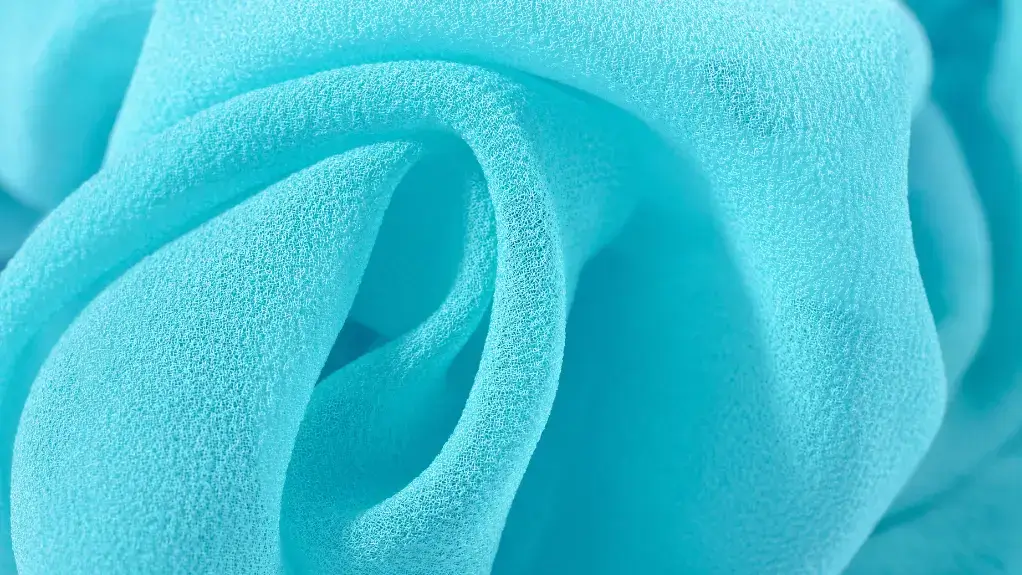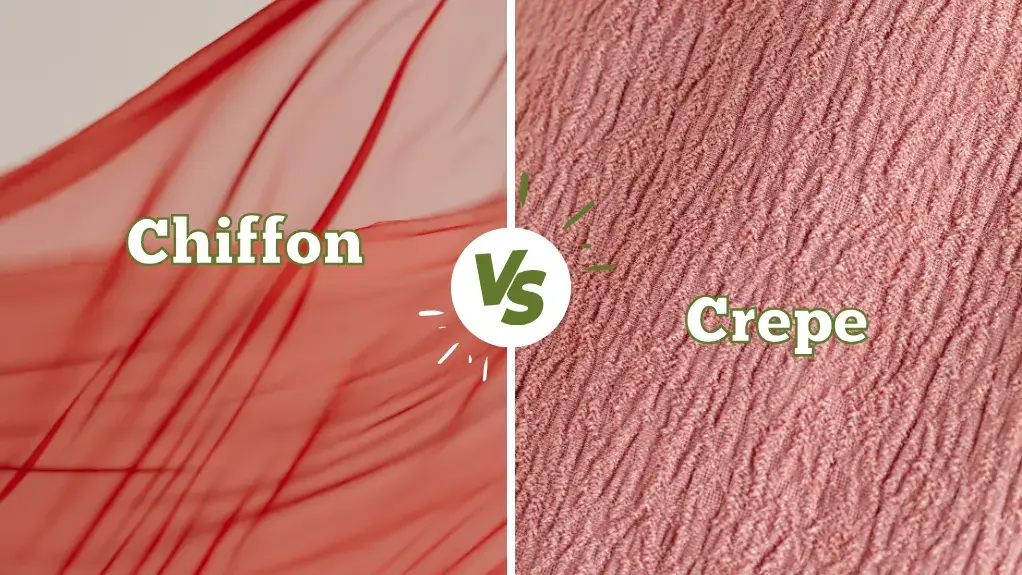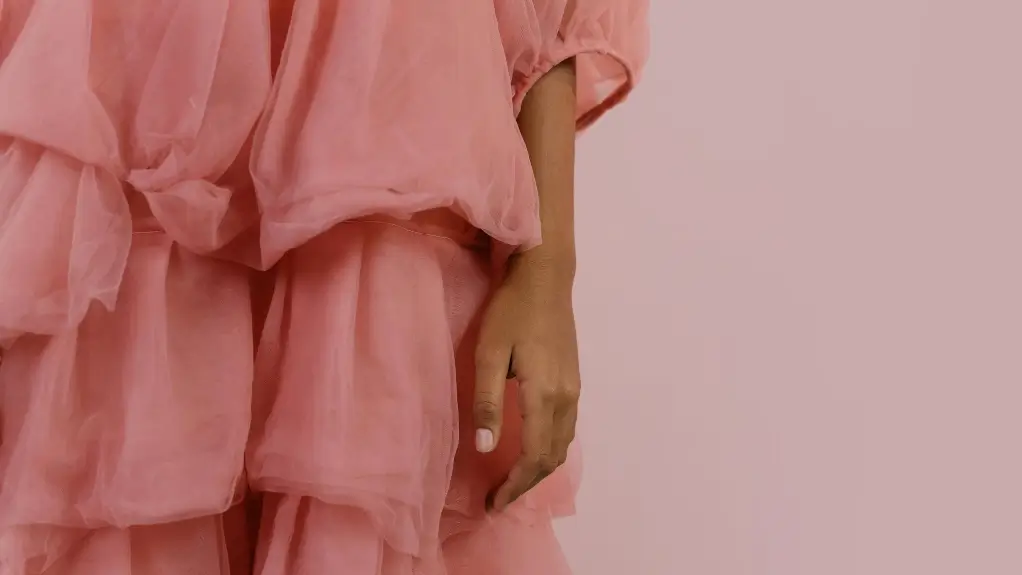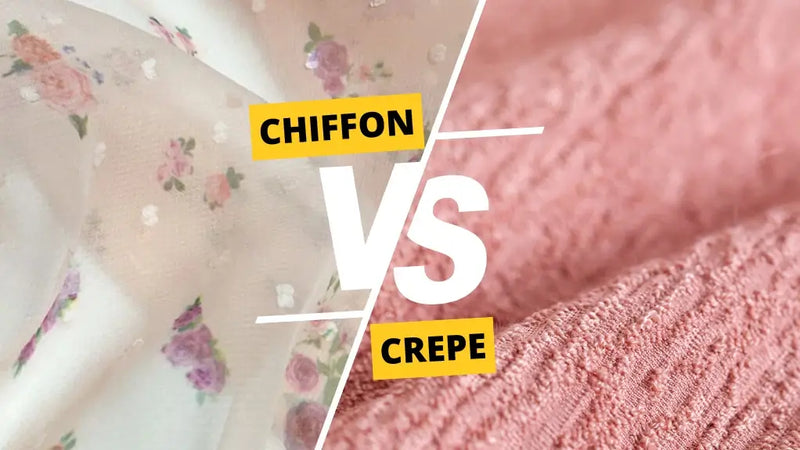When picking between crepe and chiffon, you’re choosing unique vibes for your style. Chiffon, a sheer, lightweight fabric, offers a breezy, elegant look perfect for flowing summer dresses or wedding gowns, though it’s delicate and needs gentle care.
Crepe, with its crinkled texture, gives a polished, durable feel. It is ideal for tailored blazers or evening skirts. Think about your event—chiffon for romance, crepe for structure—and explore further for deeper insights.
Key Takeaways
- Chiffon offers a lightweight, sheer look ideal for breezy, romantic styles like evening gowns and scarves.
- Crepe provides a textured, polished appearance perfect for tailored blouses and elegant skirts.
- Chiffon suits formal, flowy designs but tears easily and requires delicate handling.
- Crepe is more durable, hides wrinkles, and works for both casual and fancy outfits.
- Choose chiffon for summer elegance; opt for crepe for versatile, everyday sophistication.
What Is Chiffon Fabric?

First, let’s explore what makes chiffon fabric so special by looking at its history, production, uses, care, and pros and cons.
Chiffon Historical Background and Origins
Let's dive into the fascinating story of chiffon fabric, a material known for its airy elegance.
Chiffon's origins date back to the late 1700s in France. Initially, it was made from silk, a luxurious choice for the elite. This set it apart from crepe, another fabric often crafted as silk crepe or crepe de chine.
Back then, wearing chiffon showed status, as only the wealthy could afford it. Imagine elegant gowns at royal balls, flowing with every step.
Today, you can see why its history still inspires modern evening wear. Isn't that connection to the past amazing?
Chiffon Production Process
The journey of chiffon fabric starts with a meticulous production process that creates its signature airy look.
First, raw materials, like silk for silk chiffon or synthetic materials like polyester, are turned into fine fiber. These fibers become yarn, often using high-twist yarns to add strength and texture.
Next, the fabric is woven with a loose, plain weave, giving chiffon fabric that sheer, floaty vibe. Imagine the delicate threads crossing lightly. This method guarantees a soft, drapable result.
When you touch chiffon, you feel a carefully crafted textile, perfect for elegant, lightweight designs in your wardrobe.
Chiffon Common Uses
Ever wondered what chiffon fabric is really used for after it's crafted with such care? This sheer, lightweight material shines in creating airy garments.
Chiffon is used in stunning evening gowns and flowing dresses that move gracefully. It’s perfect for formal events or special occasions. Imagine wearing a chiffon dress at a wedding; its delicate layers add elegance.
You can also drape a chiffon scarf over your shoulders for a soft, romantic touch. Designers love chiffon for its floaty quality, making it ideal for standout looks.
Chiffon Care and Maintenance
While chiffon fabric looks stunning, caring for it requires special attention to keep its delicate beauty intact. Due to its delicate nature, chiffon requires gentle handling to maintain its look. You can't just toss it in a washer like tougher fabrics.
Here’s how to care for it:
- Always wash chiffon by hand; chiffon must be hand-washed to avoid damage.
- Use mild detergent when you wash chiffon, as harsh chemicals can ruin it.
- Avoid wringing; lay it flat to dry for best durability.
- Remember, while georgette is durable, crepe may need similar care.
Handle it right, and your chiffon pieces will shine at any event!
Chiffon's Advantages and Disadvantages
As you understand chiffon fabric, let's explore its key advantages and disadvantages.
Chiffon, a lightweight and sheer fabric, offers a stunning look but also has challenges. Knowing its pros and cons can help you decide if it fits your style.
Check out these points about chiffon:
- Its lightweight nature creates a breezy feel, perfect for summer dresses.
- The delicate and sheer fabric adds elegance with a graceful drape in gowns.
- However, its texture can be tricky to sew, often slipping.
- Durability is low; it tears easily, so handle with care.
What Is Crepe Fabric?

Next, let’s discuss crepe fabric and its unique history and uses, which make it so special.
Crepe Origin and History
The fascinating story of crepe fabric begins in France, where it emerged as a unique textile centuries ago. As you explore crepe fabric, know that it started as a luxury silk fabric, often made with silk for royalty. Its distinct texture set crepe apart from smoother cloths.
Later, wool crepe and other crepes appeared, expanding its use. Imagine elegant gowns crafted from this material for high society in the 1800s.
Understanding crepe’s history helps you appreciate its versatility today. You’ll see why crepe fabric remains a go-to for dresses and suits, blending tradition with modern style.
Crepe Production Process
Explore the world of crepe fabric, and you'll uncover a fascinating production process that creates its signature look.
This fabric gets its unique crinkle from twisted fibers, which are woven in a special way. Whether it’s silk or polyester, the magic happens during weaving.
In the crepe production process, yarns are tightly twisted before weaving, creating tension. This gives crepe that bumpy, textured feel you notice.
For silk, it’s often hand-processed for finesse, while polyester uses machines for speed.
Imagine touching a Crepe scarf—those twists make it distinct. Understanding this helps you pick the right material for your next project.
Crepe Common Uses
Imagine discovering crepe fabric, a versatile material known for its unique crinkled texture. You’ll love how crepe adds elegance to any garment. Its special drape makes it ideal for various styles.
When crafting a skirt or gown, choose crepe for a polished look.
It’s perfect for evening wear, flowing beautifully in dresses that catch the eye.
You can also spot crepe in everyday outfits, like tailored blouses. This fabric suits many occasions, from casual to fancy.
Explore crepe fabric’s charm and elevate your wardrobe today.
Crepe Care and Maintenance
Crepe, a versatile fabric choice, needs special care to maintain its charm. Unlike chiffon, crepe is often tougher but still requires attention. Let’s break down how to care for it.
Here’s how to handle crepe and chiffon differences in upkeep:
- Check labels, as crepe fabric is known for varying needs.
- Hand-wash synthetic materials like polyester to avoid damage.
- Avoid wringing crepe; lay it flat to dry.
- Iron on low to keep the texture intact.
Follow these, and your crepe stays stunning!
Crepe Advantages and Disadvantages
While exploring fabrics, let’s zero in on crepe and its unique pros and cons.
Crepe, with its graceful texture, offers versatile qualities that stand out in the crepe fabric vs chiffon debate.
Though heavier than chiffon, this fabric still drapes beautifully, creating elegant looks.
- Crepe hides wrinkles well, perfect for travel outfits.
- Its durability suits everyday wear, like blazers or skirts.
- However, it can feel warm, less ideal for hot days.
- Maintenance might need dry cleaning for lasting quality.
These unique qualities make crepe a practical choice for polished, professional styles you’ll love.
Crepe Vs Chiffon: Key Similarities and Differences

After learning about the two fabrics, let’s discuss how chiffon and crepe stack up with their key similarities and differences.
Key Similarities Between Crepe and Chiffon
Take a moment to notice how chiffon and crepe, despite their differences, share some fascinating traits.
Both fabrics, often made from silk, boast a lightweight feel and an elegant vibe. They’re versatile too, fitting various styles. Let’s break down their similarities!
- Both offer a stunning drape, perfect for flowing gowns.
- Their subtle sheen adds a touch of class to any outfit.
- They work in elegant designs, like scarves or dresses.
- You’ll find them in formal wear, enhancing sophistication.
Key Differences Between Chiffon and Crepe
Let's shift gears and explore what sets chiffon and crepe apart in their unique qualities. Check this table for a quick comparison:
| Feature | Crepe Fabric | Chiffon Fabric |
|---|---|---|
| Texture | Grainy, crinkled or pebbly surface | Smooth, sheer, and slightly rough |
| Weight | Medium to heavy | Lightweight |
| Transparency | Opaque | Sheer, see-through |
| Material Composition | Can be silk, wool, polyester, or blends | Usually silk, nylon, polyester |
| Drape | Good drape but slightly stiffer | Very fluid and flowing drape |
| Stretchability | Moderate to low | Low to none |
| Durability | Durable, holds shape well | Delicate, prone to snagging |
| Common Uses | Dresses, suits, skirts, blouses | Evening wear, scarves, overlays |
| Care Instructions | Usually dry clean or gentle wash | Dry clean recommended |
| Appearance | Matte or slightly shiny | Sheer and shiny |
See how chiffon suits romantic styles, while crepe fits professional outfits? Choose based on your event!
How to Choose Between Chiffon and Crepe

How do you decide between chiffon and crepe for your next outfit?
First, consider the look you’re aiming for with your choice. Chiffon, a lightweight and sheer fabric, offers a soft, flowing drape perfect for dreamy dresses, like a prom gown.
Its smooth texture adds elegance, while crepe, with its crinkled texture, gives structure for tailored pieces, such as blazers.
Think about the occasion, too. If you’re dressing for a formal event, chiffon’s airy vibe works best. For a professional setting, pick a crepe for its polished look.
Match the fabric to your style needs!
Final Words
So, which fabric fits your style, chiffon or crepe? Chiffon, with its sheer, lightweight feel, works beautifully for flowy summer dresses or delicate overlays, while crepe’s crinkled texture offers structure for sharp blazers or formal gowns.
Think about your project—do you need a breezy evening look or a polished office outfit? Choose based on your desired vibe, and you’ll create something that truly matches your vision and purpose.
Learn more fabric knowledge on the Longan Craft Blog, and dive into the fabric world with Longan Craft!
FAQs
Can Chiffon Be Used for Winter Clothing?
Think twice! Its lightweight, sheer texture isn't ideal for cold weather. Layer it under heavier fabrics, or you'll freeze. Stick to warmer options instead!
Is Crepe Suitable for Casual Everyday Wear?
You’ll love its versatility! Its crinkled texture and great drape make it perfect for comfy dresses or stylish blouses.
How Does Chiffon Handle Outdoor Conditions?
When you're considering chiffon for outdoor conditions, remember it’s lightweight and breathable, so you’ll stay cool. However, its sheer, delicate nature means you’ve gotta watch for snags and protect it from harsh weather.
Does Crepe Fabric Shrink After Washing?
Crepe, especially polyester or wool blends, often resists shrinking. But always check the care label. To be safe, don’t skip a gentle wash!
Can Crepe Be Used for Upholstery?
For durability and texture, you can use it, especially polyester or wool crepe. Though it’s less common than heavier fabrics, it adds sophistication.


0 comments